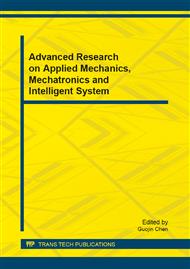p.238
p.242
p.246
p.253
p.260
p.265
p.270
p.275
p.279
Research on a Method of Service-Oriented Network Layer Network Security Situation Assessment
Abstract:
The purpose of this study is to obtain the running situation of the network service accurately and efficiently, and then to perceive the overall security situation of the network. Simultaneity, find the potential agressire behavior and abnormal status. A service-oriented approach is presented. After establishing an evaluation index system at the network level, extracting the momentum factors, we use fuzzy AHP combining with evidence theory for real-time evaluation of network security situation to get the running situation of the network service, and then to evaluate the overall security situation of the network, identify potential attacks and network anomalies, help network policy makers take positive action and avoid to cause irreparable serious consequences. Experimental data show that the network security posture assessment results can be sensitive to changes in network status and accurately reflect the status of the network's security situation.
Info:
Periodical:
Pages:
260-264
Citation:
Online since:
July 2013
Authors:
Price:
Сopyright:
© 2013 Trans Tech Publications Ltd. All Rights Reserved
Share:
Citation:


